Freestanding acrylic bathtubs: shapes, sizes and selection rules
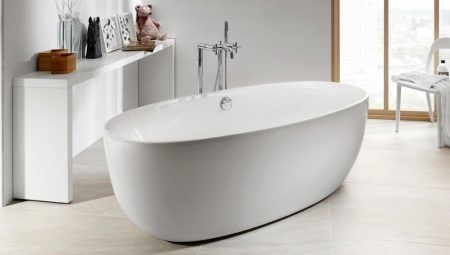
A freestanding bathtub is usually associated with luxury, spaciousness. However, with proper planning and choosing a suitable model, such a font can be placed even in a typical medium-sized bathtub. Advantages and disadvantages of freestanding bathtubs, selection criteria and beautiful examples in the interior - in this article.
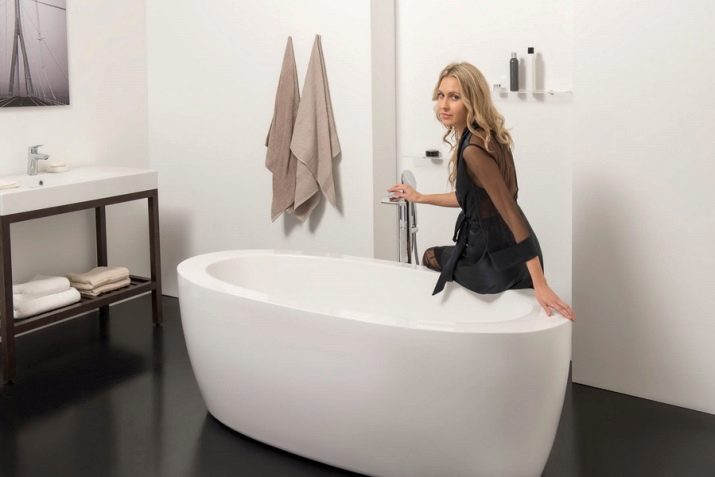
Advantages and disadvantages
A freestanding bathtub is always an exclusive, memorable element. Thanks to her, she manages to turn the bathroom into a boudoir, a spa corner, add bliss and grace to the interior. In some interior styles, a freestanding bathtub is almost a requirement. First of all, these are bathrooms decorated in vintage, retro, Provence style. Thus, such a bowl allows you to better and more accurately convey the style of the room.
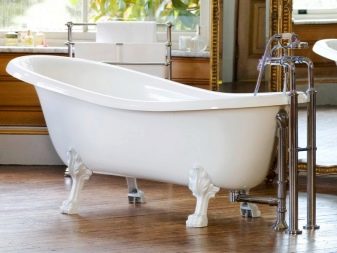
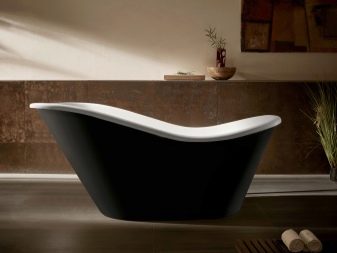
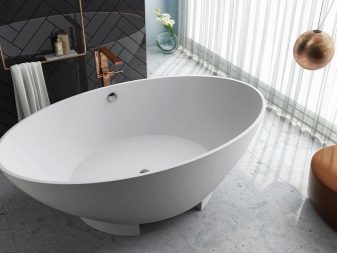
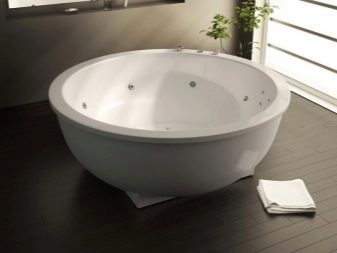
The freestanding bathtub can be installed anywhere in the washroom, allowing any design idea to come true.
It should be noted that such a bath allows you to use space efficiently - niches and shelves can be made on all walls of the room for storing bath accessories and accessories. In most cases, this allows you to abandon the use of cabinets and racks, which often clutter up the room.
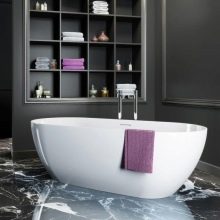
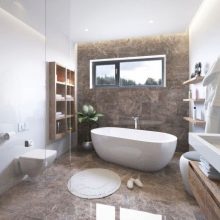
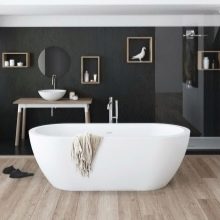
Speaking specifically about acrylic freestanding bathtubs, it is worth noting their durability (the period of operation is about 25-30 years), fairly good resistance to mechanical damage, reliability and attractive appearance... These characteristics are combined with affordability (for the price of acrylic baths - the middle option between more expensive cast iron and more affordable steel baths).
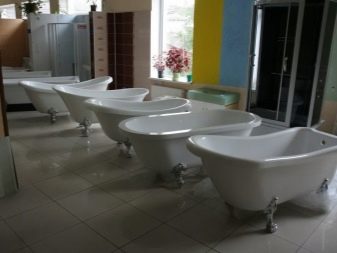
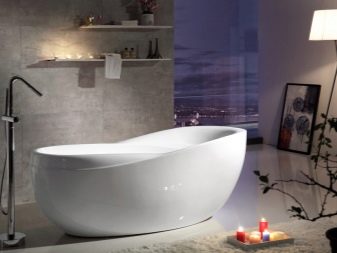
Acrylic is a lightweight and environmentally friendly material, so there are no special difficulties during delivery and installation. In addition, these are raw materials with low thermal conductivity, that is, they give off heat slowly, which means that the water in such a bath will not cool down.
The walls of acrylic bathtubs do not rattle or deform, but only if they are of sufficient thickness (at least 6 mm). With a smaller wall thickness, acrylic bathtubs will have a noticeable disadvantage - they will deform under the influence of a large weight.
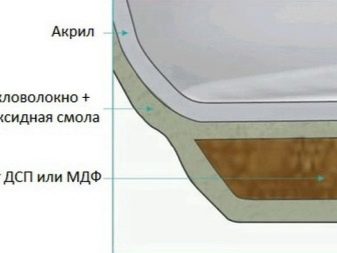

Acrylic is a fairly easy-to-process, plastic material. That is why bowls made from it have a variety of shapes. In addition, it is very easy to pigment the acrylic mass, therefore, in addition to standard snow-white products, you can also purchase colored counterparts.
The disadvantage of such products can be called the possibility of their use only in large bathrooms. As a rule, these are modern apartments with an improved layout (or standard apartments, but after redevelopment of the bathroom), as well as private houses, various hotels, SPA complexes, etc.
Even if the bathtub will be located not in the center, but along one of the walls, at least 50-80 cm should be retreated from it. Not everyone, due to the size of the room, can afford it.
Another "disadvantage" can be called higher cost of free-standing models compared to their standard "wall-mounted" counterparts. Even with the same volume and size, such bowls have a difference in price by an average of 1.5-3 times.
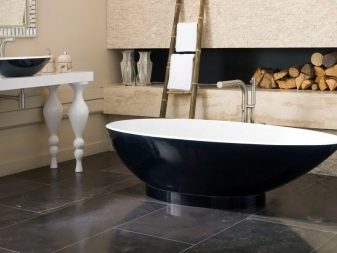
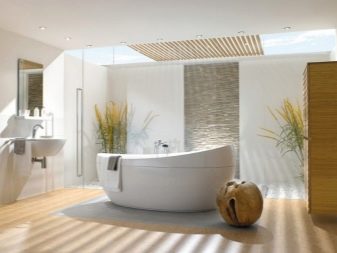

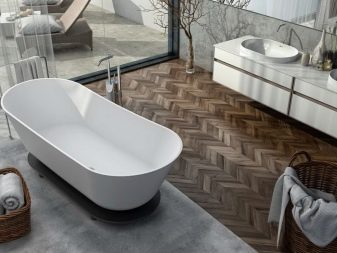
Finally, a freestanding bathtub is characterized by a more complex, time-consuming and costly installation. Under the plumbing wiring of such a bowl, it is necessary to lay grooves, pipes, etc.
Form overview
Freestanding bathtubs come in almost any shape. Oval and round products look especially luxurious, which are suitable primarily for classic interiors. Such bowls, as a rule, are located in the center, they become the accent of the interior. Quite often, round baths are mounted inside the podium so that the walls of the bath only slightly rise above it.
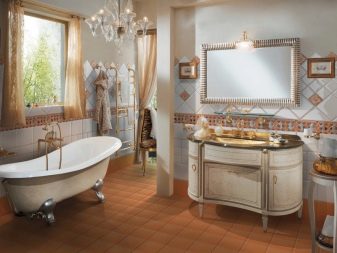

The same can be said about rectangular and square models. Such fonts look especially stylish in Art Nouveau and Baroque interiors. Preference should be given to large bowls with regular lines on massive legs with a pattern.

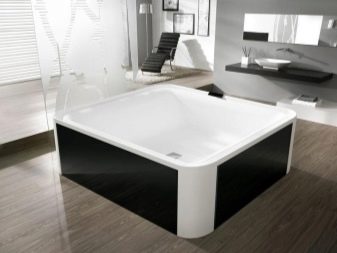
A rectangular or rounded bowl on the podium will fit well into a modern interior, including hi-tech. Ideal if it is equipped with a glass insert.

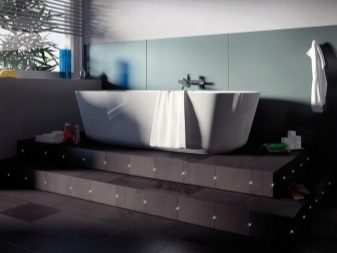
Asymmetrical bathtubs can also be freestanding. These are various trapeziums, drop-shaped baths, bowls in the shape of a semicircle. They look best in trendy interiors. Such products can also be colored, if the whole room is designed in certain colors.
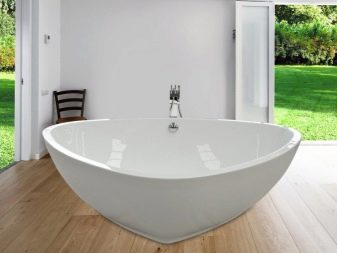
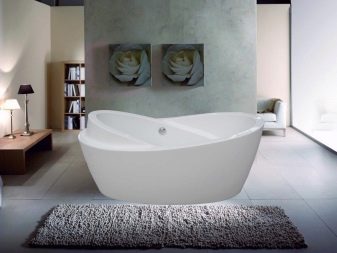
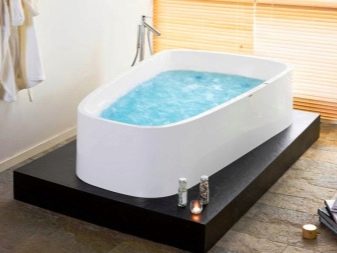
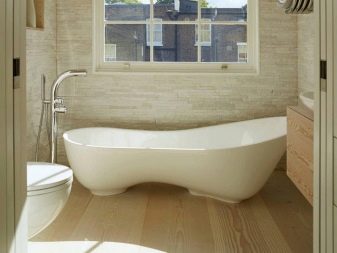
Dimensions (edit)
Freestanding hot tubs can be of almost any size. Although quite rare, you can find on sale small-sized products with the parameters of the longest side (if it is an asymmetric model) of 90-120 cm.
The most popular are standard bathtubs, the length of which is 150–160 cm. They are suitable for installation both in apartments and in private houses and are considered relatively comfortable. An adult of average height assumes a semi-recumbent position in them (for comparison, in a small-sized font you will have to wash while sitting). Font sizes 150x70, 170x70 cm are considered standard.
Finally, large-sized bathtubs are distinguished, the length of which is from 180 cm. Considering that free-standing samples are nevertheless intended for spacious rooms, it is large-sized models that fully embody such basic characteristics as ease of use and luxury.
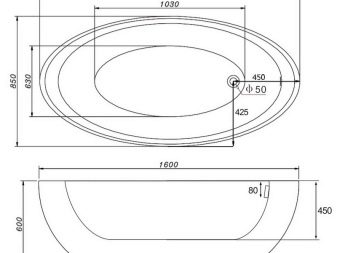
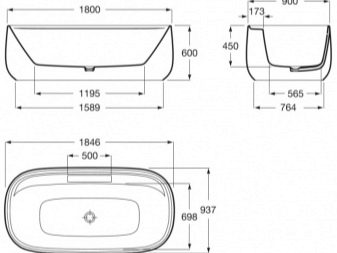
For private houses, bowls with a length of 200 cm or more are usually purchased.
The standard width of rectangular and oval baths is 60–90 cm. But again, keeping in mind that freestanding bowls are usually chosen for large rooms, the width often starts from 90–100 cm and ends at 120–130 cm.
When describing the size of freestanding bathtubs, their depth is usually mentioned. It can vary within 42-50 cm. European brands usually produce bathtubs with a depth of 37-45 cm, while domestic products have a depth of 47-50 cm.
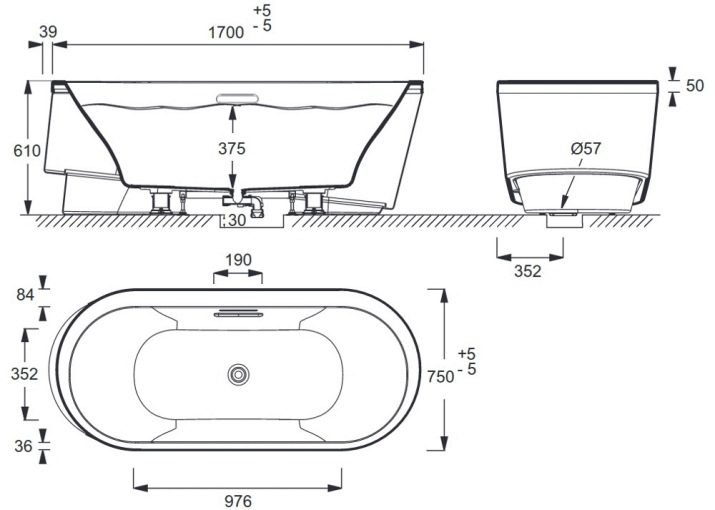
How to choose?
When choosing a free-standing bath, you need to focus primarily on the size of the room where it will be located. At a minimum, the bathtub should fit into the room and not clutter up the aisles. However, the opposite situation: too small a bathtub for a large room is not the best option. With this approach, a comical effect is created, all the luxury of such a bowl is lost.


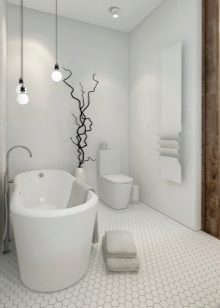
Second point - immediately decide on the features of the font installation... It may be necessary to install a podium for her in order to arrange all communications under it. When placing the podium, it is worth taking care of how the person will get into and out of the bathtub. However, today you can find models on sale, the communications of which can be accommodated without a podium.

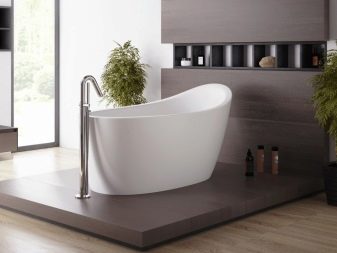
The next criterion is the shape of the bath. It is selected depending on your own preferences, the characteristics of the style of the room.
Acrylic freestanding bathtubs can be cast or extruded. In products of the first type, the molecular bonds of the material are denser, which means that the cast baths will be of better quality and more durable.
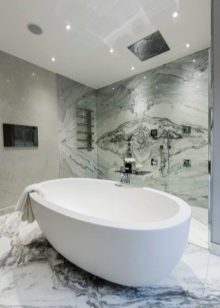
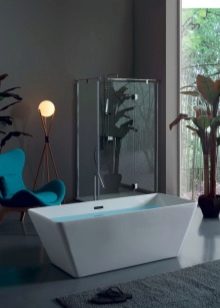
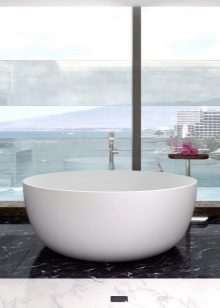
Among the free-standing options, there are practically no products of the combined type. But even if you see similar ones on sale, it is better to refuse to buy such a product. They represent a font made of reinforced moisture-resistant plastic, the inner part of which is covered with an acrylic layer. Such products are afraid of temperature extremes, have a short service life (10-15 years), and are easily deformed.


Recently on sale more and more often you can see quaril baths. Buying them is not a bad option. Kvaril is a type of acrylic containing quartz sand. Thanks to such an additive, quaril baths have an even longer service life (on average 30 years) and are characterized by increased reliability. The improved operational properties determine the higher cost of kvaril baths, however, they do not differ externally from their acrylic counterparts.
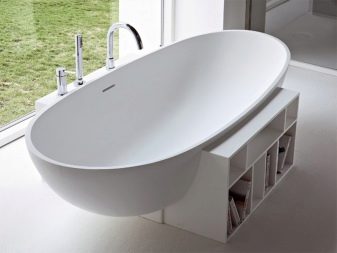
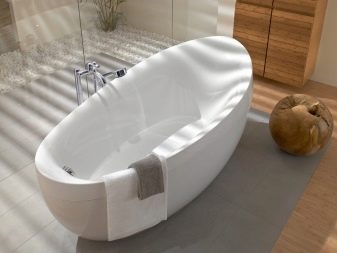
It is important to pay attention to the quality of the product. The wall thickness must be at least 6–8 mm. Thin-walled options are cheaper but ultimately less durable. No less important is the number of reinforcing layers: from 1 to 5. In a good product there are 3-5 of them. You can count the number of layers if you look at the edge of the bath - the reinforcement will be visible, the layers are clearly calculated.
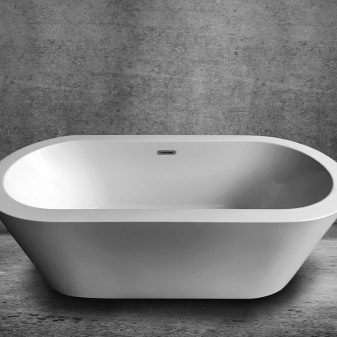

Additionally, you can spend test for quality and wall thickness with a flashlight... You need to shine them on one of the walls of the bath: if the beam is visible from the other side, this indicates insufficient wall thickness. The product cannot be called high quality.
Another test is to tap the bathtub in several places. The sound should be equally dull everywhere. The surface should also be uniform: without roughness, gray and yellow spots, blotches.


If the product stands on legs, then they must be strong. Important: decorative legs are never installed as an independent support. They usually cover the stronger support legs. If there are irregularities in the floor, then auxiliary legs are additionally required. But again, the main burden should not fall on them.
The legs should be attached to the bowl and floor using self-tapping screws or brackets. All other fixation methods are unreliable. As when choosing a bowl design, when buying legs, you should consider how they fit into the interior of the room.

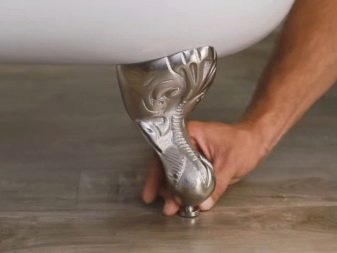
If desired, you can purchase a bath with additional functions. Since such models are more expensive, it makes sense to pre-weigh whether you really need them. In many cases in large quantities there is no urgent need - 1-2 is enough. Among the popular ones: hydro and air massage, water ozonation and bath drying, lighting.
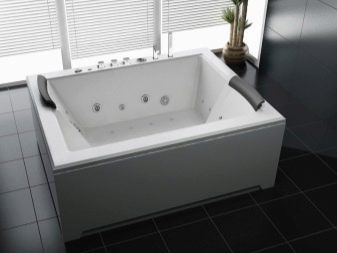
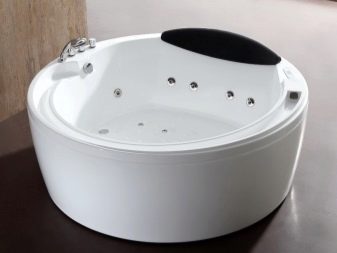
Care Tips
In general, acrylic bathtubs are not capricious in nature. It is important to remember only that they do not tolerate abrasive and too aggressive products. A sloppy appearance and darkening primarily cause all sorts of micro-damage to the surface: the use of powders and abrasives, hard brushes.
The best option is to use gel formulations for cleaning (ideally, especially for acrylic) and soft sponges. The acrylic bathtub is well cleaned with ordinary liquid soap or dishwashing detergent. The use of a special polish will help ensure the shine of the product.
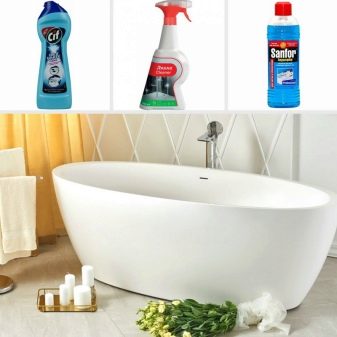
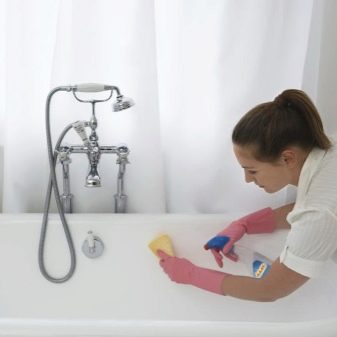
It is not recommended to soak linen in an acrylic bowl. The surface of the bowl is adversely affected by the action of water powder and dirt escaping from the laundry.
Despite the strength of acrylic, Avoid falling into the bathtub heavy objects, especially from a great height. This is fraught with the appearance of microdamages and visible cracks on the surface.
If you have hard water in your area, it is necessary to wipe the bathtub dry after use so that no limescale builds up on the surface in the future.

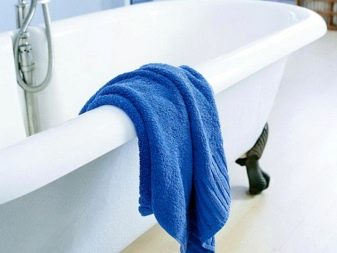
If the acrylic bathtub is damaged, you can repair it by purchasing a special composition for this. If the appearance of the bowl has significantly deteriorated, you can pour a new layer of acrylic on the old bathtub.
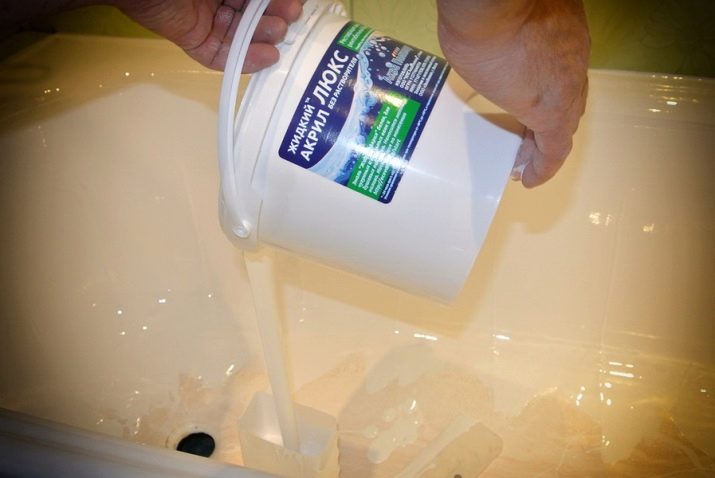
Beautiful examples
The epitome of luxury in a contemporary style. Thanks to the large, oval freestanding font, it is possible to create an atmosphere of bliss, while the decoration and design in general are quite minimalistic.

A boudoir-style room with a rounded bath with powerful legs in the form of paws, a huge mirror, exquisite plumbing and a multi-tiered crystal chandelier.
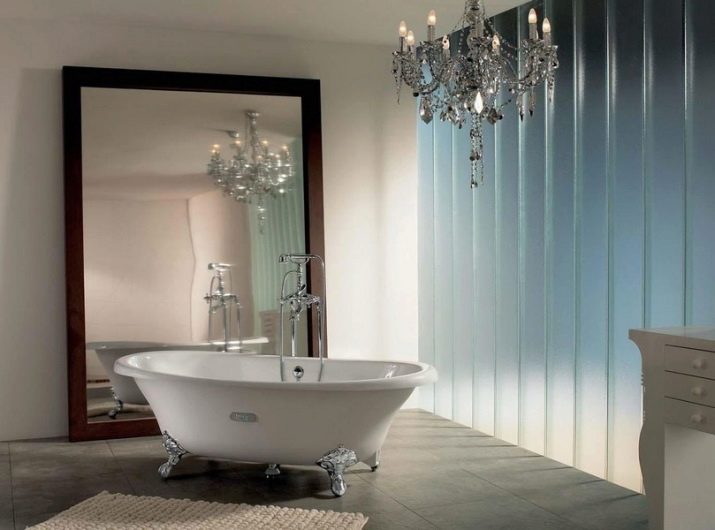
An unusual shaped bathtub in an ethnic interior. The color and position behind the original wrought-iron wall makes the bowl the focal point of the interior.
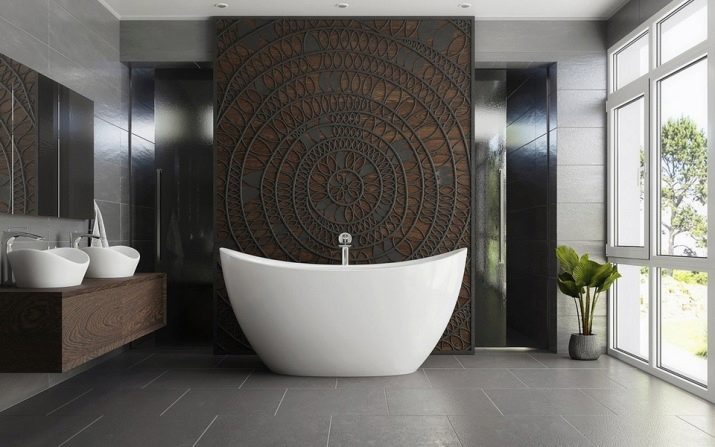
For information on how to properly install a freestanding acrylic bathtub and who suits it, see the next video.








